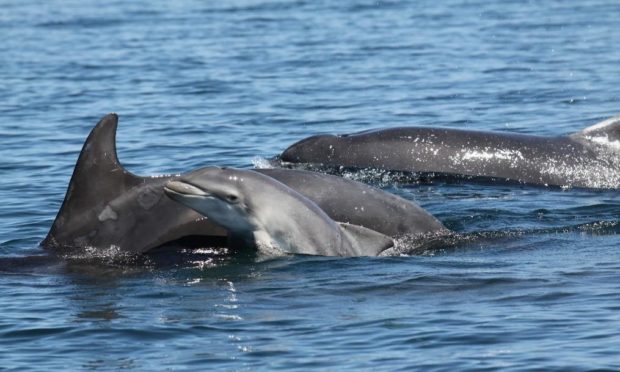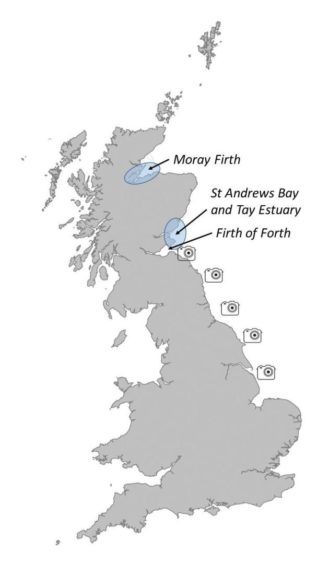Wildlife watchers are being asked to send photos of bottlenose dolphins to St Andrews University experts to help with research.
The ‘Citizen Science’ project aims to help understand changes in movements and protect the dolphins along the east coasts of Scotland and England.
Led by Dr Monica Arso Civil and Professor Philip Hammond, of the university’s Sea Mammal Research Unit (SMRU), the project is funded by NatureScot and by the Forth and Tay offshore wind developers, Seagreen, Inch Cape and Neart na Gaoithe.
Boat surveys every summer have found the same population in the Moray Firth and the Tay Estuary, including the waters off Angus and Fife.
The researchers use photographs to identify individual dolphins based on the nicks, notches and other natural marks on their dorsal fins.
This allows the team to estimate how many there are, their birth and natural mortality rates, and to learn about their movements up and down the coast.
Recent years have seen an increase in sightings of bottlenose dolphins from this population in the Firth of Forth and as far south as the coast of northern England.
Dr Arso Civil said: “We have been monitoring this population of bottlenose dolphins for 30 years now, which has allowed us to follow individuals, sometimes from birth, as they have gone on to raise their own young.”
One dolphin, known as Guinness, is a female first photographed in 1989 with her then one-year old female calf, Muddy.
Regularly seen in the Moray Firth during the 1990s, Guinness was then spotted more frequently around the Tay Estuary and St Andrews Bay, where she was last seen in 2015.
She has since turned up in Tynemouth, Sunderland and Berwick Upon Tweed.
Dr Arso Civil added: “While we are not sure exactly why this southward range expansion is happening, if people can help us by sharing photographs they have taken of bottlenose dolphins in areas south of St Andrews Bay and the Tay estuary, we can build up a better picture of the dolphins’ movements over time.
“The pictures could be recent ones, or older photographs taken in the last few years, as these will help fill gaps in the sighting histories of dolphins.”
The photographs should show the dolphin’s dorsal fin so that animals can be identified and matched to the population’s catalogue of individuals.
The project’s website explains how members of the public can submit their photographs.






